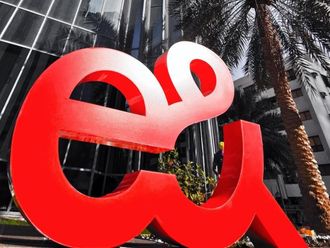The first generation Surface Book was a feat of engineering that took Microsoft’s Surface tablet PC and turned it on its head, making it a laptop first and a tablet second. The Surface Book 2 refines a few things, adds much more power and finally adopts USB-C.
With the screen attached like a laptop it behaves just like any other Windows 10 laptop with an interesting hinge. Press the detach key and the screen pops off, turning into a full tablet PC with up to five hours of battery life. But you can also turn the screen over and re-attach it to the base to either have the screen facing away from the keyboard, or folded down to make an angled drawing pad.
It means you can go from a laptop one minute to a note-taking tablet the next to a graphics tablet thereafter. In every situation the 13.5-inch Surface Book 2 excels, thanks to some accessories, including the excellent Surface Pen and Dial.
There are a few caveats. The screen on its own is thin and light for a PC tablet, but I would not be comfortable taking it out and about on its own as it doesn’t feel as robust as the Surface Pro or similar. As a laptop, the fulcrum hinge extends out further away from the user than a traditional laptop hinge would, meaning the base of the laptop is quite long and I struggled to fit it between my gut and the back of the seat in front of me on a train. On a desk, though, the Surface Book 2 is arguably the best Windows laptop available.
Battery life was solid, but not as spectacular as Microsoft’s quoted 17 hours might suggest. With 10 or so tabs open in Chrome and with Spotify, NextgenReader, Windows Mail, Typora and Affinity Photo open at different times, as well as 45 minutes of watching video on Netflix with the tablet detached (and all with recommended brightness and recommended power mode active), the Surface Book 2 lasted around nine hours before powering down.
The tablet alone would easily last around three hours of movie watching, or more with the brightness turned down.
One of the important updates for the Surface Book 2 is Microsoft’s eventual acceptance of USB-C, which has increasingly become an important standard, not only for connecting accessories such as displays, but also for charging.
The Surface Book 2 has one USB-C port, which will also charge the machine, alongside the Surface Connector. But unlike most other high-end machines, the USB-C port does not double as a Thunderbolt 3 port, which is a shame for such an expensive and otherwise capable computer.
The improved Surface Pen is the best stylus in the business — accurate, with low latency, pressure and tilt sensing, it stays firmly attached to the side of the screen with magnets. It’s the first stylus that has not come off in my bag while transporting any machine.
The new machine also supports Microsoft’s Surface Dial rotary accessory, both on and off the screen similar to the company’s Surface Studio desktop computer. While using it on the screen can be a bit cramped, it works very well indeed. It will work as a general computing input for things like scrolling through web pages, zooming or adjusting the volume, and can be set to perform certain tasks on an app-by-app basis.
The Microsoft Surface Book 2 starts at £1,499 for the base model with 256GB of storage, a 7th gen Core i5 (dual-core) and 8GB of RAM, but without a discrete graphics card in the keyboard.
The 8th gen Core i7 (quad-core) version with 256GB of storage, 8GB of RAM and a GeForce GTX 1050 discrete GPU costs £1,999. The same Core i7 version with 512GB, 16GB of RAM and GPU costs £2,499 and with 1TB of storage and 16GB of RAM £2,999.
It’s not perfect, lacking Thunderbolt 3, but the Surface Book 2 is arguably the best Windows 10 power-user laptop going — plus you can take the screen off.
— Guardian News & Media Ltd
Pros
• Excellent keyboard, great trackpad
• Brilliant screen and great stylus
• 9-hour battery
• USB A, full-sized SD and USB-C,
Cons
• Windows still has tablet app gap
• Very expensive and relatively heavy
• Still a bit of play in the hinge
• No Thunderbolt 3








